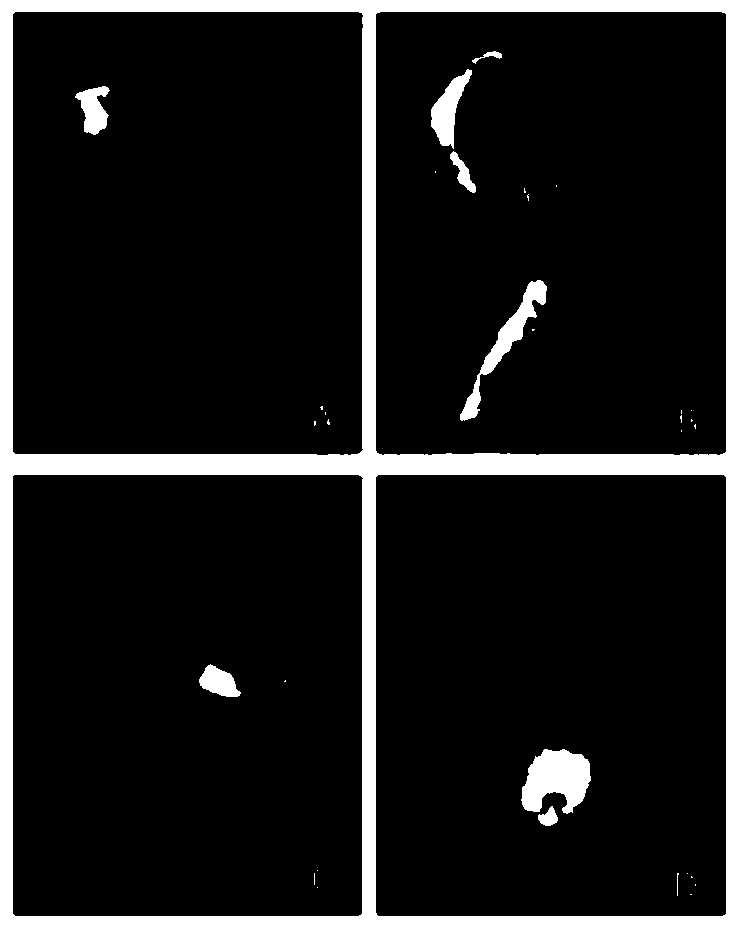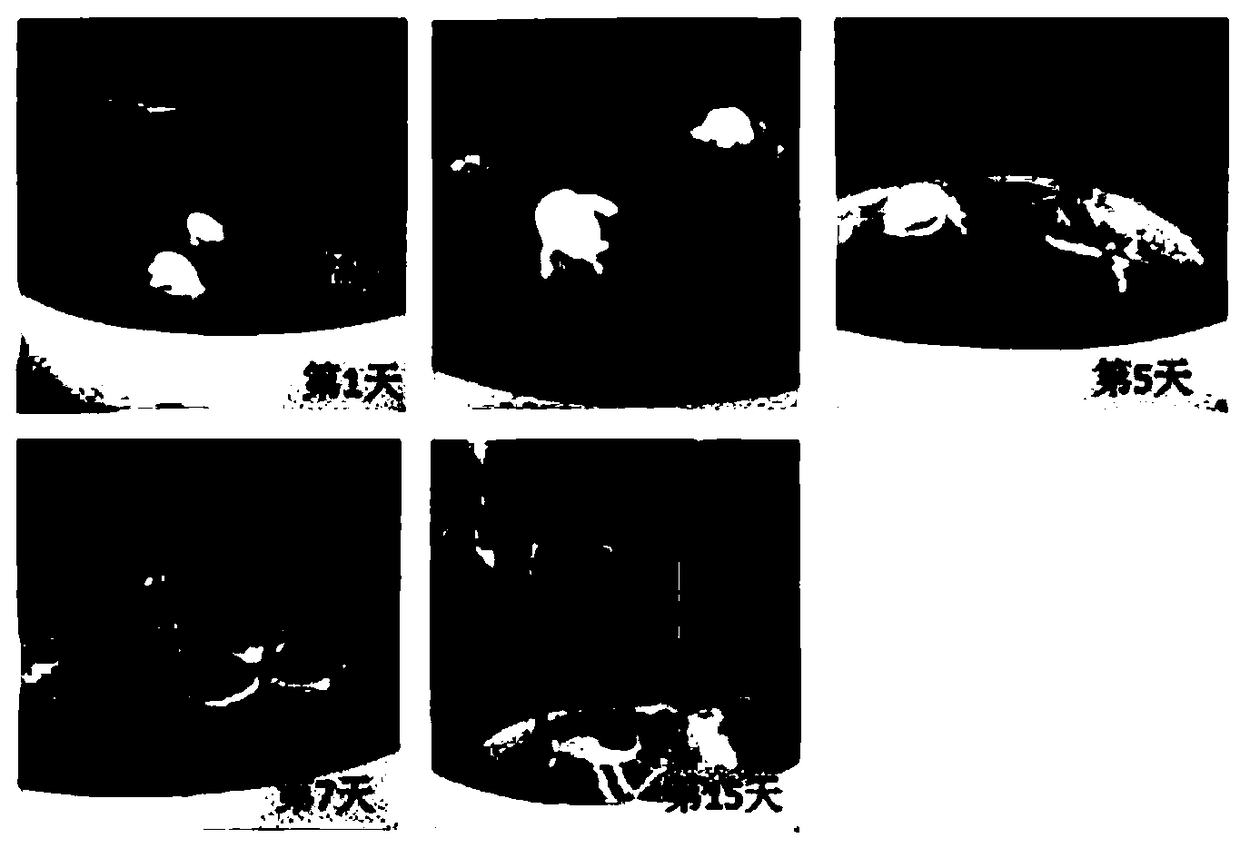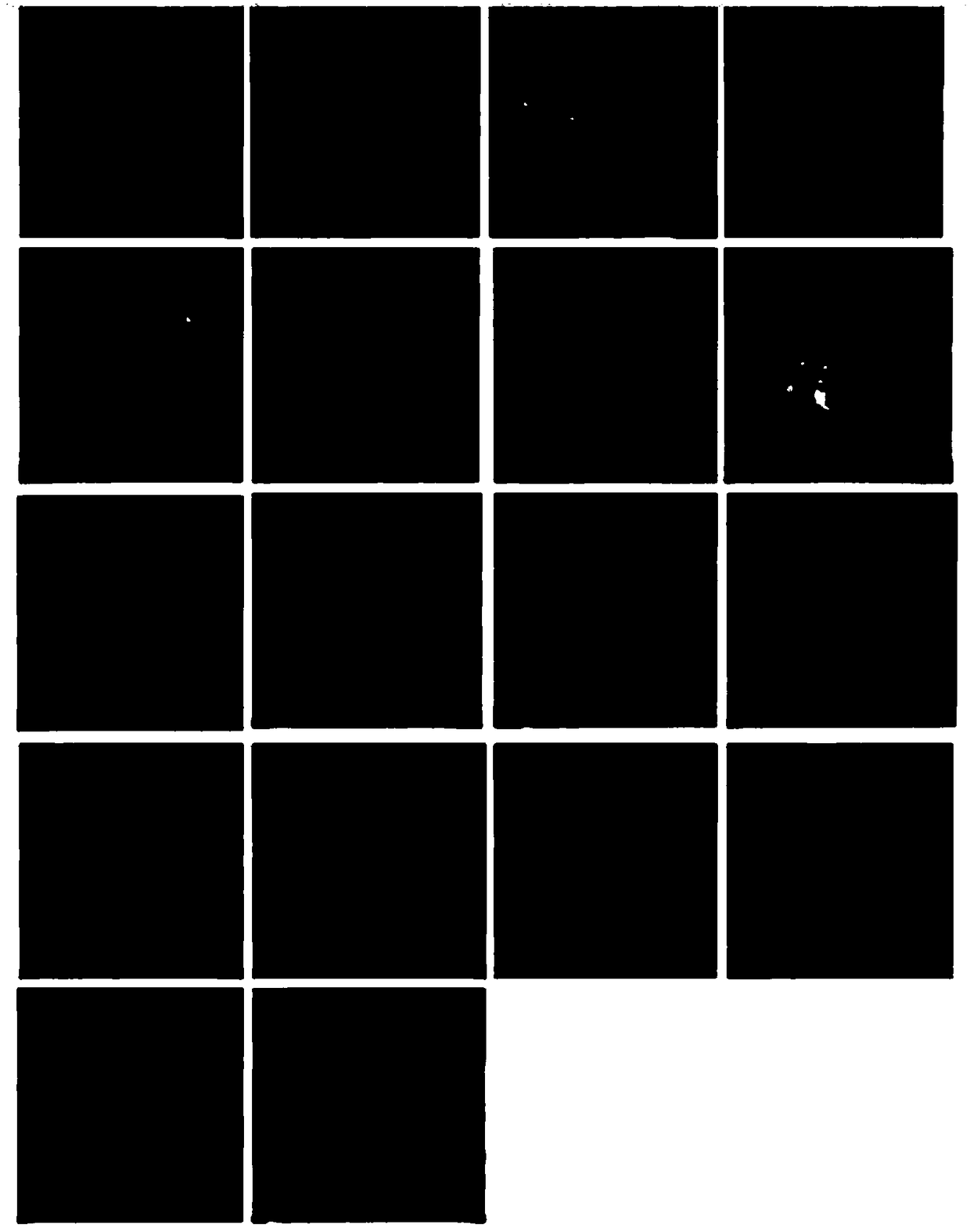Inducing method for murraya paniculata callus
A technology of callus and induction medium, applied in horticultural methods, botanical equipment and methods, horticulture, etc., can solve the problems of low seed setting rate, small reproduction coefficient, and less flowering, and achieve the effect of low cost and easy operation
- Summary
- Abstract
- Description
- Claims
- Application Information
AI Technical Summary
Problems solved by technology
Method used
Image
Examples
preparation example Construction
[0036] Medium preparation and culture conditions: According to the experimental design, use MS basic medium, and add different concentrations of NAA, 2,4-D, 6-BA and other plant growth regulators as needed, agar powder 8g / L, sucrose 30g / L, use 1mol / L HCl and NaOH to adjust the pH of the culture medium to 5.8-6.0, boil, after the agar melts, put it into tissue culture bottles, autoclave at 121°C for 25min, take it out for use.
[0037] The culture conditions are all: fluorescent lighting, culture temperature 23-25°C, relative air humidity 50-70%, light time 12h / d, and light intensity 1500-2000Lx.
[0038] Data statistics and analysis: Excel 2007 was used for data processing and graphing, and SPSS 20 variance analysis software was used for data analysis.
[0039] Contamination rate (%) = number of seeds infected with bacteria / number of seeds inoculated × 100%
[0040] Germination rate (%) = number of germinated seeds / number of uncontaminated seeds × 100%
[0041] Browning rate ...
Embodiment 1
[0043] The influence of embodiment 1 different disinfection time on seed disinfection result
[0044] On the ultra-clean workbench, first sterilize the mature seeds of Thyme thyme with 75% ethanol solution for 1 min, and then sterilize them with 0.1% HgCl containing Tween 20 2 Solution disinfection 6 ~ 12min, Tween 20: HgCl 2 Solution (v / v) = 1:1000, rinsed with sterile water 6 times, 3 minutes each time; put the sterilized seeds into a sterilized tissue culture bottle with a cover for later use, put the sterilized seeds into Put them into a Petri dish covered with sterile filter paper, blot the water on the surface of the material, remove the seed coat with tweezers and a scalpel, and then inoculate it into MS basic medium. Each treatment received at least 15 bottles, each bottle received 2 seeds, and repeated 3 times. The pollution rate and seed germination rate were counted 20 days after inoculation, and the disinfection effects of various treatments and their effects on ...
Embodiment 2
[0050] The influence of embodiment 2 different hormone kind concentrations on callus induction of Thyme thyme
[0051] The explants for inducing callus are leaves and roots of sterile seedlings. Cytokinin 6-BA (0.3mg / L, 0.5mg / L, 1.0mg / L), auxin 2,4-D (0.5mg / L, 1.0mg / L, 2.0mg / L) and NAA ( 1.0mg / L, 2.0mg / L, 3.0mg / L) are callus-inducing hormones, and 6-BA and NAA, 6-BA and 2,4-D were used as factors to design an orthogonal experiment with 2 factors and 3 levels , a total of 18 formulations were obtained, each treatment had at least 15 explants, and each formulation was repeated 3 times. Regularly observe the earliest days of callus appearance, callus induction rate, callus state color, etc., and screen out the most suitable material and medium formula for induction of callus by Thyme thyme.
[0052] Table 2 Orthogonal experiment design for callus induction of Thyme chinensis
[0053]
[0054] 1. Effects of different hormone types and concentrations on the callus induced by ...
PUM
 Login to View More
Login to View More Abstract
Description
Claims
Application Information
 Login to View More
Login to View More - R&D
- Intellectual Property
- Life Sciences
- Materials
- Tech Scout
- Unparalleled Data Quality
- Higher Quality Content
- 60% Fewer Hallucinations
Browse by: Latest US Patents, China's latest patents, Technical Efficacy Thesaurus, Application Domain, Technology Topic, Popular Technical Reports.
© 2025 PatSnap. All rights reserved.Legal|Privacy policy|Modern Slavery Act Transparency Statement|Sitemap|About US| Contact US: help@patsnap.com



